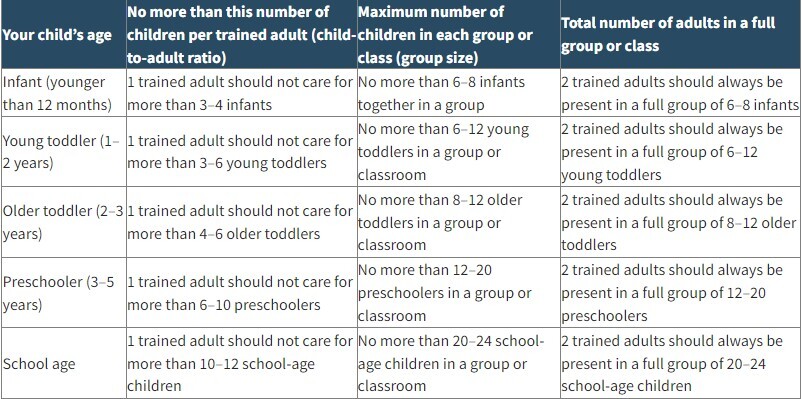Child-to-adult ratio
What exactly is a child-to-adult ratio? The ratio is the number of adults who are present to teach and care for a group of children. It is also sometimes called the child-to-staff when it is pertaining to child care businesses and teaching institutions.
Why are ratios important in child care?
The preferred child-to-adult ratios tend to be low, meaning a smaller group of children per adult. This allows the child caregivers the ability to give more attention to each individual child. Individualized attention with children helps them feel secure and safe, which results in less stress to both parties. Studies have also shown that the results of low child care ratios increase the child’s physical well-being, social and emotional development, and the ability to learn.
What is the child care ratio for a child care business in my state?
Although the ratio requirements vary by state and type of program, a general rule of thumb to follow is the younger the children, the more trained adults should be present and the smaller the group size should be.
Here is an example of what the child care ratio for your state might look like, according to ChildCare.gov. Be sure to check your state and program’s exact requirements before starting a child care business.
Check out The Child Care Technical Assistance Network to get the latest state ratios for child care requirements.
Information used in this blog can be found: https://childcare.gov/consumer-education/ratios-and-group-sizes







